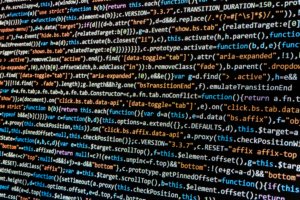Interactive Brokers fails to dismiss ex-client’s complaint over negligent position liquidation
Robert Scott Batchelar alleges that Interactive Brokers’ trading software was negligently designed, and the result was an automatic liquidation of the positions in his account that cost him thousands of dollars more than it should have.

Online trading major Interactive Brokers cannot escape a lawsuit launched by one of its ex-customers at the Connecticut District Court. On September 30, 2019, Judge Alvin W. Thompson signed an order denying the brokerage’s motion to dismiss the case brought by Robert Scott Batchelar.
Batchelar has brought a claim against Interactive Brokers, LLC alleging that its trading software was negligently designed, which resulted in an automatic liquidation of the positions in his account that cost him thousands of dollars more than it should have. The plaintiff is also suing Interactive’s parent company, Interactive Brokers Group, Inc. (“IBG”), under a theory of respondent superior, and Thomas A. Frank, an officer of IBG, claiming he was personally responsible. The defendants have moved to dismiss these claims but yesterday Judge Alvin W. Thompson nixed their attempt.
Batchelar was a customer of Interactive starting in August 2011. He had a margin-trading account with Interactive. Interactive’s computer software continuously and automatically determines whether there is a margin deficiency in an account. Once it determines a margin deficiency, the software locks the account, cancels all pending trades, and prohibits the customer from depositing additional collateral or ordering particular trades to cure the deficiency while it liquidates the positions.
On August 24, 2015, Interactive’s software declared a margin deficiency in Batchelar’s account and began liquidating his positions. All that Batchelar held in his account at that time were positions in a security called “SPX put option”. Batchelar had short-sold these positions, so as the sale price went higher, he lost more money. After declaring a margin deficiency, the software began liquidating Batchelar’s positions. It started at 10:11:15 A.M. and ended at 10:31:37 A.M. In that time, Interactive’s software made fifty-one trades at prices ranging from $5.00 to $83.40 per unit. At one point, during a nineteen-second period, the software executed eight trades at prices ranging from $7.00 to $83.40 per unit. This was higher than the going market price for the securities at the time of the sale. Batchelar claims that those transactions disproportionate to the market cost him somewhere between $95,145 and $113,807.
In his Second Amended Complaint, Batchelar alleges that the auto-liquidation was “the result of negligent design, coding, testing and maintenance.” He alleges that the programming flaws were the result of Interactive’s failure to meet industry standards in its design and testing of the software and its failure to include certain instructions in the algorithm.
The defendants assert that Interactive’s duties are defined exclusively by the Customer Agreement, and that the Customer Agreement expressly authorized Interactive to liquidate the positions in a margin-deficient account, as well as that under the Customer Agreement Interactive has “sole discretion to determine the assets to be liquidated and the order/manner of liquidation.”
The court concludes that the expectations of the parties favor finding that a duty to use care exists in this case. Although Interactive is correct that the regulations and the Customer Agreement permit it to liquidate the positions in a margin-deficient account in its sole discretion, that does not mean that the parties would normally expect that Interactive has the right to liquidate the positions in the account in a negligent manner.
Moreover, the fact that Interactive has been found liable, in a FINRA arbitration, to at least one customer for negligence suggests that the parties would expect that Interactive would be liable for the negligent execution of trades.
Further, after assessing a number of public policy factors, the Court concluded that these factors weigh in favor of finding that Interactive had a duty to use care as to Batchelar.
The Court determined that Connecticut courts would recognize an independent extracontractual duty owed by Interactive to Batchelar to use care in designing and using the auto-liquidation software. Thus, the motion to dismiss was denied with respect to the claim against Interactive.
Batchelar seeks to hold Frank, who is an officer of IBG, personally liable for negligence in the design, testing, programming, and maintenance of the software. After weighing a set of public policy factors, the court concludes that they weigh in favor of finding that Frank owed a duty to Batchelar to use care in designing, testing, programming, and maintaining the software. Hence, the motion to dismiss was denied with respect to the claim against Frank.
Finally, Batchelar claims that Interactive Brokers Group’s liability is derivative of Frank’s liability, as he is IBG’s employee. The court concluded that since Batchelar has adequately pled a claim of negligence against Frank, the motion to dismiss has to be denied with respect to the claim against IBG.









